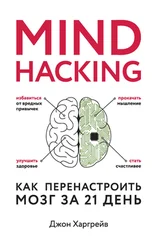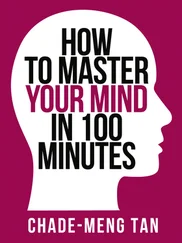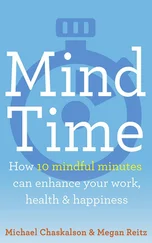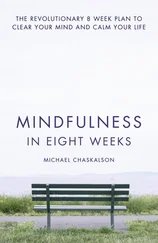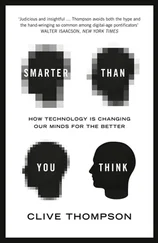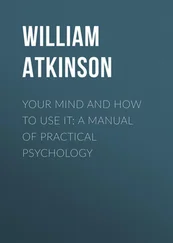Most of us can relate to the scene in Office Space where the three geeks take a printer out into a field for a gangland-style execution. Small technology annoyances can build up over time until one day your rage explodes and you find yourself in a field with a baseball bat, your hands stained with toner.
So you can understand why Stallman tracked down the programmer of the printer software, who had now taken a job at Carnegie Mellon, then flew out to visit him. Stallman asked in a friendly way, hacker to hacker, if he could have a copy of the source code. The programmer refused.
Something inside Stallman snapped.
“I was so angry I couldn’t think of a way to express it,” Stallman recalled later. “So I just turned away and walked out without another word.” 5To Stallman, it was a betrayal of the hacker ethic, a violation of the shared code that everyone should share code.
This started what can only be called a holy war. Stallman became an outspoken activist that all software should be free to use, study, distribute, and modify. He began publishing manifestos, 6started the Free Software Foundation, and invented a new alternative to copyright called “copyleft.” His revolutionary idea was that software with a “copyleft” license could be freely modified and copied, as long as the resulting software was also free .
In other words, programmers could rest assured that the work they put into improving software—like hacking a solution to the printer jam problem—would forever benefit the world, not be locked up and patented by some bloated software corporation.
Stallman’s “copyleft” license, and later variants of it, had world-changing effects. It spawned GNU and Linux, which currently run a third of all web servers. 7It gave rise to Apache, which is used by over half the servers in the world. 8It birthed Firefox, which is used by a quarter of all people on the Web. 9PuTTY. GIMP. Bugzilla. Thunderbird. Bitcoin. You could list literally thousands of projects, millions of developers, and billions of users benefiting from open source software.
And it all started in Richard Stallman’s mind.
The mind hacking movement is free.It’s called mind hacking, not Mind Hacking®, because we all own it. The online version of this book is under a Creative Commons (copyleft) license, available for free. 10The tools and techniques you’ll learn in this book are also free, which means they can be copied, modified, and improved.
Like open source software, together we are inventing a science of self-improvement . Our goal is to be able to say with a high degree of confidence, “If you do X, then you can expect result Y,” tested and retested with hundreds of thousands of volunteers. These should not be vague and nebulous instructions like “Think positively” but specific things you can do . And they should work for the majority of people who put in the effort to actually do them.
Stallman didn’t know how to fix the printer, so he found a hack that let him work around that limitation. Mind hacking should have that same spirit of creative problem solving. It should let the majority of us hack our minds via the simple, elegant solutions dreamed up by smart people like you.
Principle #2: Mind Hacking Is Experimental (and You Are the Experiment)
Seth Roberts, like so many of us, had acne.
Before he became the emeritus professor of psychology at UC Berkeley, a respected scientist, and a best-selling author, Seth Roberts had zits. His dermatologist prescribed the antibiotic pill tetracycline, a typical acne treatment at the time. Roberts was a grad student studying experimental psychology, so as practice for his class he began experimenting on himself . He varied his daily dosage of tetracycline, from zero to six pills, then wrote down the number of pimples on his face each day.
To his surprise, he found the dosage of his medication made absolutely no difference.
One day Roberts ran low on tetracycline pills, so he tried an over-the-counter benzoyl peroxide cream instead. To his surprise, the number of pimples decreased. When he stopped using the benzoyl peroxide cream, more pimples. When he started back up, fewer pimples.
This simple self-experimentation showed him that tetracycline didn’t work for his acne, and benzoyl peroxide did. He learned something that his dermatologist, the “expert,” didn’t know. (Later research studies would show that certain types of acne are antibiotic-resistant, but of course Roberts already knew that.)
“My experience has shown that improve-your-life self-experimentation is remarkably powerful,” wrote Roberts in Tim Ferriss’s masterpiece of self-experimentation, The 4-Hour Body . “I wasn’t an expert in anything I studied . . . but I repeatedly found useful cause-and-effect relationships that the experts had missed.” 11
The exercises you’ll read in this book can be done on yourself: in fact, the only way to prove they work for you is through experimenting on yourself. By working together, mind hackers can also pool our self-experiments. We can show, through millions of personal tests, what works for the majority of us, making the program even better. You benefit from all the mind hackers who have gone before you—and you in turn help the generation to come. By helping stress-test this system, you reduce your own stress.
Because the mind is such an intimate, personal experience, you are the only person who can determine if it works for you. The nature of the mind means that you can’t take someone else’s word for it; you have to discover it yourself. You’re the scientist, and your mind is the experiment.
Principle #3: Mind Hacking Is Mastery
Think back to the beginning of your geekhood. Whatever your geek obsession, whether you’re into computers or comics or candle making, try to capture that feeling of first discovering the thing you loved so much. You probably weren’t being paid to learn it; you were just learning it because you couldn’t help yourself.
It was intrinsically fascinating and intellectually stimulating. But more than that, there was a feeling of what I can only call joyful power in conquering everything there was to know about that subject.
If you had to put that feeling into one word, it was probably “mastery.”
In Daniel H. Pink’s Drive: The Surprising Truth About What Motivates Us , he argues that mastery is one of the great motivators of human achievement. 12This is why we spend hours detailing our maps of Middle-earth or memorizing a complicated riff on the ukulele. No one is paying us: the satisfaction of mastery is greater than any monetary reward.
The one thing that defines geeks is that we want to conquer a tiny piece of the world. We turn our death-ray intellects on a small subset of the world, desiring to possess it utterly, whether that is hand-forging a battle-axe for the Renaissance faire, folding the world’s largest origami crane, or learning all the lyrics to The Music Man . We want to bring order to chaos, to control the uncontrollable.
In a word: mastery .
To master your mind is to master your life.There is no more worthwhile pursuit. As satisfying as it is to find 100 percent of the hidden weapons in your favorite video game, or to commit to memory lengthy poems in Klingon, if a fraction of that time can be spent mastering your mind instead, you will have a master key that can unlock all doors.
Approaching your mind with that same geeky mix of curiosity and craving, that spirit of conquering and completion, is what mind hackers are after. Remember that feeling; it is your fuel. As Nerdist founder Chris Hardwick has advised in his excellent book The Nerdist Way , see if you can take your laser-like powers of geek focus and train them on your own mind. 13
Читать дальше
![Джон Харгрейв Mind Hacking [How to Change Your Mind for Good in 21 Days] обложка книги](/books/404192/dzhon-hargrejv-mind-hacking-how-to-change-your-min-cover.webp)


